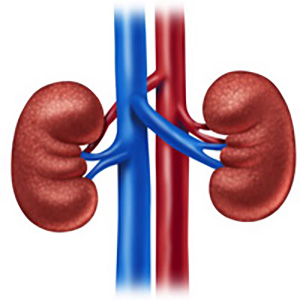Is quadratus lumborum block combined with low dose-spinal anesthesia an effective alternative to general anesthesia in patients undergoing percutaneous nephrolithotomy?

Accepted: August 1, 2023
All claims expressed in this article are solely those of the authors and do not necessarily represent those of their affiliated organizations, or those of the publisher, the editors and the reviewers. Any product that may be evaluated in this article or claim that may be made by its manufacturer is not guaranteed or endorsed by the publisher.
Background: General anesthesia in high-risk patients has many complications and needs long preoperative preparations and postoperative intensive care unit (ICU). Therefore the present study aimed to evaluate the efficacy of combined low-dose spinal anesthesia with quadratus lumborum block (QLB) as an alternative to general anesthesia for patients undergoing percutaneous nephrolithotomy. Patients and methods: A prospective study was conducted at the urology department of Al-Azhar University Hospitals in Cairo, Egypt, from January 2021 to January 2022. The study included 60 patients of ASA ll-lll scheduled for percutaneous nephrolithotomy. All patients received low-dose spinal anesthesia (5 mg bupivacaine) and QLB (QL1-QL2-QL3) approaches. The primary observation parameter was the efficacy of this technique as an alternative to general anesthesia. The secondary parameters measured were evaluation of need for intraoperative narcotics, postoperative pain score (VAS), and patients satisfaction as assessed using a 5-point Likert Scale. Results: None of the patients was given general anesthesia, and intraoperative sedation was given to nineteen patients (32.2%). No hemodynamic changes were observed in all patients. There was a significant correlation between the use of intraoperative sedation and stone site, intraoperative blood loss, and hospital stay. Pain intensity on VAS at rest and movement was low until the 24th postoperative hour. Patient satisfaction score was 3, 4, and 5 in 1 (1.7%), 4 (6.7%), and 55 (91.6%) patients, respectively. Conclusions: Combined low-dose spinal anesthesia with quadratus lumborum block is an effective alternative to general anesthesia in patients undergoing PCNL procedures with good postoperative analgesia. Patients with lower calyceal punctures have a lower incidence of intraoperative sedation requirements.
Ghani KR, Andonian S, Bultitude M, et al. Percutaneous Nephrolithotomy: Update, Trends, and Future Directions. Eur Urol. 2016; 70:382-396. DOI: https://doi.org/10.1016/j.eururo.2016.01.047
Sauter AR, Ullensvang K, Niemi G, et al. The Shamrock lumbar plexus block: A dose-finding study. Eur J Anaesthesiol. 2015; 32:764-70. DOI: https://doi.org/10.1097/EJA.0000000000000265
Jin Z, Liu J, Li R, et al. Single injection Quadratus Lumborum block for postoperative analgesia in adult surgical population: A systematic review and meta-analysis. J Clin Anesth. 2020; 62:109715. DOI: https://doi.org/10.1016/j.jclinane.2020.109715
Verma K, Malawat A, Jethava D, Jethava DD. Comparison of transversus abdominis plane block and quadratus lumborum block for post-caesarean section analgesia: A randomised clinical trial. Indian J Anaesth. 2019; 63:820-826. DOI: https://doi.org/10.4103/ija.IJA_61_19
Baytar Ç, Yılmaz C, Karasu D, Topal S. Comparison of Ultrasound-Guided Subcostal Transversus Abdominis Plane Block and Quadratus Lumborum Block in Laparoscopic Cholecystectomy: A Prospective, Randomized, Controlled Clinical Study. Pain Res Manag. 2019; 2019:2815301. DOI: https://doi.org/10.1155/2019/2815301
Cardoso JM, Sá M, Reis H, et al. Bloqueio do quadrado lombar tipo II para uma gastrectomia subtotal em um paciente séptico [Type II Quadratus Lumborum block for a sub-total gastrectomy in a septic patient]. Braz J Anesthesiol. 2018; 68:186-189. DOI: https://doi.org/10.1016/j.bjan.2016.09.009
Li X, Xu ZZ, Li YT, et al. Analgesic efficacy of two approaches of ultrasound-guided quadratus lumborum block for laparoscopic renal surgery: A randomised controlled trial. Eur J Anaesthesiol. 2021; 38:265-274. DOI: https://doi.org/10.1097/EJA.0000000000001433
Akerman M, Pejcic N, Velickovic I. A review of the quadratus lumborum block and ERAS. Front Med. 2018; 5:44-49. DOI: https://doi.org/10.3389/fmed.2018.00044
Blanco R. 271. Tap block under ultrasound guidance: the description of a “no pops” technique. Regional Anesthesia and Pain Medicine 2007; 32:130-130 DOI: https://doi.org/10.1016/j.rapm.2007.06.268
Blanco R, Ansari T, Girgis E. Quadratus lumborum block for postoperative pain after caesarean section: A randomised controlled trial. Eur J Anaesthesiol. 2015; 32:812-8. DOI: https://doi.org/10.1097/EJA.0000000000000299
Raman R, Prabha R. Quadratus Lumborum Block for Patients Undergoing Percutaneous Nephrolithotomy: A Randomized Controlled Study. Anesth Essays Res. 2021; 15:174-178. DOI: https://doi.org/10.4103/aer.aer_92_21
Chen L, Ji J, Tian Sun Q, et al. Retrospective study of quadratus lumborum block for postoperative analgesia in patients undergoing percutaneous nephrolithotomy. BMC Anesthesiology. 2020; 20:1-9. DOI: https://doi.org/10.1186/s12871-020-01134-3
Kılıç E, Bulut E. Quadratus Lumborum Block III for Postoperative Pain After Percutaneous Nephrolithotomy. Turk J Anaesthesiol Reanim. 2018; 46:272-275. DOI: https://doi.org/10.5152/TJAR.2018.92331
Peksoz U, Celik M, Alici HA, et al. The Effect of Transmuscular Quadratus Lumborum Block on Postoperative Opioid Consumption in Patients Undergoing Percutaneous Nephrolithotomy: A Randomized Controlled Study. Cureus. 2021; 13:e18344. DOI: https://doi.org/10.7759/cureus.18344
Copyright (c) 2023 the Author(s)

This work is licensed under a Creative Commons Attribution-NonCommercial 4.0 International License.
PAGEPress has chosen to apply the Creative Commons Attribution NonCommercial 4.0 International License (CC BY-NC 4.0) to all manuscripts to be published.


 https://doi.org/10.4081/aiua.2023.11584
https://doi.org/10.4081/aiua.2023.11584



